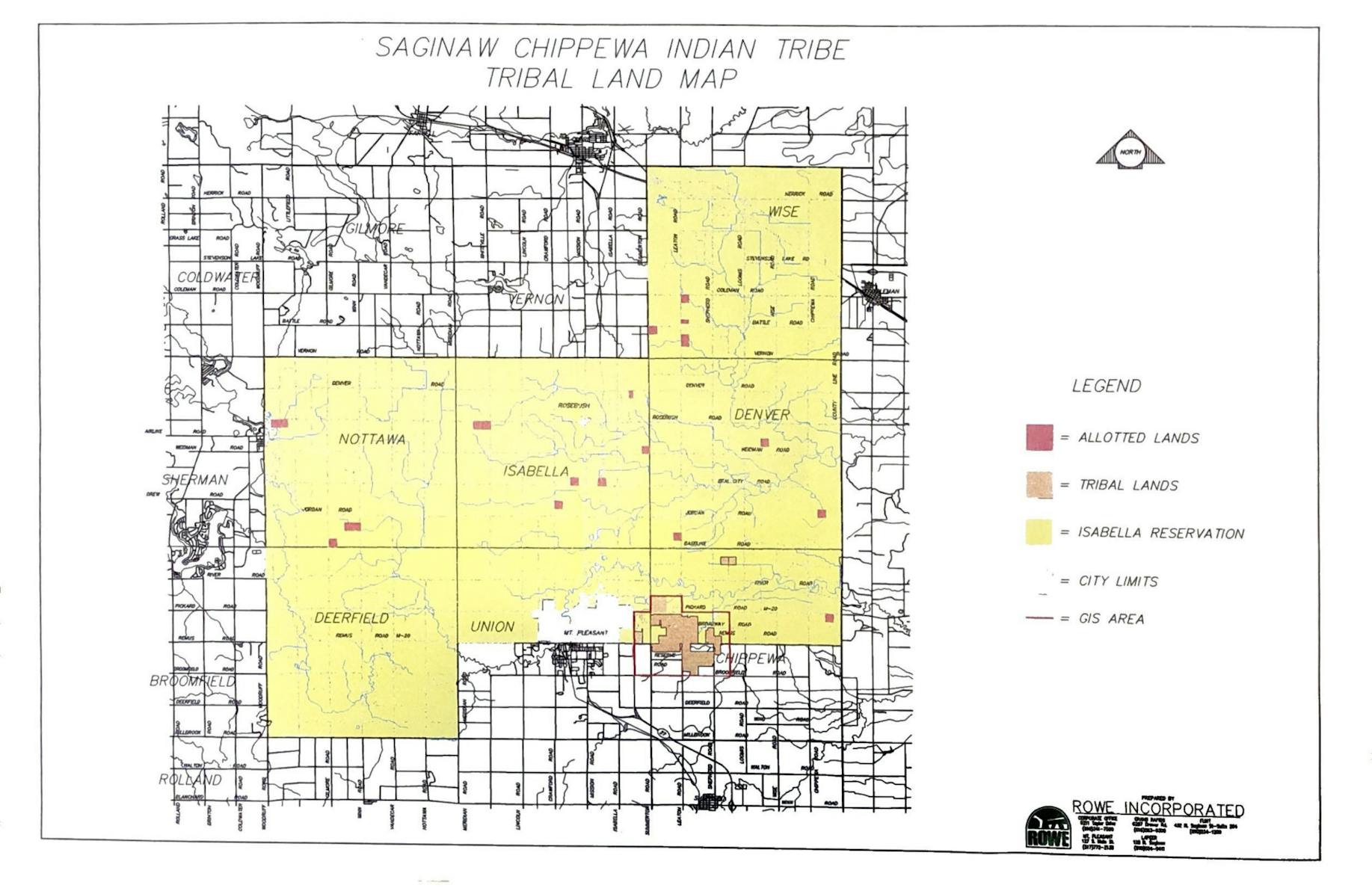‘We’ll always be asking for forgiveness’ says former mayor Cynthia Kilmer
Central Michigan University and local historians explain the history of Mount Pleasant
It is possible to say that the Mount Pleasant area began with the acquisition of a large plot of land by a man named David Ward. But that’s not the full story.
“This town was founded on corruption,” local historian, former mayor and city commissioner Cynthia Kilmer said. “It’s better now, but that’s how it started.”
Kilmer was mayor of Mount Pleasant for a year in 2006, and spent nine years as a city commissioner. Now retired from a legal practice, she’s working on a book to chronicle the history of Isabella County.
The simple facts are that Mount Pleasant was established in 1831, according to the city of Mount Pleasant website, but there’s a longer history of mistreatment.
Starting with a turn for the worst
Antoine Cadillac landed in Detroit in 1701 but most settlements were coastal.
“You have a fort in Detroit, you have a fort in Mackinac, you have Sault Ste. Marie,” Clarke Historical Librarian Bryan Whitledge said. “You don’t have a lot of settlements inland, like Isabella County.”
“The community was built on the backs of lumbermen and farmers,” Kilmer said. But as white people from East coast cities like New York moved in for the cheap land, the federal government was also in the process of consolidating and relocating native tribes to the area from the Southeast.
The Treaty of 1819 and the Treaty of 1836, both were treaties where tribal communities all around Michigan gave up land to the U.S Government, according to the Tribal Treaty database.
“(The Treaty of 1819) is signed in Saginaw, and that’s why it's called the Treaty of Saginaw, but the land encompasses, really, the southern, southeastern half of Michigan that had yet to be ceded,” Whitledge said. “The big one that’s northwest, is the Treaty of 1836, which is what cedes most of the northern half of the lower peninsula, and a lot of the upper peninsula.”
The relocation was also a result of the federal Treaty of 1855, which moved most of the tribes from the lower peninsula to the central part of the mitten, according to the Tribal Treaty database.
The Treaty of 1855 also set up a reserve in Isabella county, which would have the six townships of half of Union (Mount Pleasant), half of Chippewa, all of Denver, all of Isabella, all of Wise, all of Nottawa and all of Deerfield.
The financial takeover
“At the time the lumber industry was extremely profitable,” Kilmer said. She explained that David Ward was a lumbering agent, who took advantage of the land made cheaper by the “graduation act,” and wanted to resell it for profit.
The Graduation Act of 1854 is more commonly referred to as the Homestead Act, according to the Lincoln Presidential Library and Museum, and it allowed homesteaders to settle on public land and own it after a few years of development.

But the land he purchased, Kilmer said, was actually supposed to belong to the tribe. She said Ward had federal connections to George McClellan who signed off on the purchase.
And what would make the land more profitable to sell, Kilmer said, than to make it the county seat?
Around 1860 when the vote took place to make Mount Pleasant the county seat, the population of the area was still dominated by members of the tribe, she said.
“There was a lot of bribery,” Kilmer said. “David Ward bribed a lot of people.”
In 1872, the U.S Government actually started allocating land to the Native people. However, this land did not fit the way of life that the Native people were living, which was summering on the lakes and wintering inland.
“You’ve given somebody who’s lived that type of life 40 acres and said ‘make a life’,” Whitledge said. “The land doesn’t necessarily stay in native hands very long.”
They were in rough times, especially with being taxed too.
“You aren’t able to subsist and also thrive in the way that you used to,” Whitledge said. “So what do you have that’s worth value? You’ve got this land, so you sell it.”
As more white farmers moved into the area, they kept making deals to buy land from the tribe members.
“All of these men who came to Mount Pleasant … would pray on the Chippewa men to sell their land,” Kilmer said. “They were totally taken advantage of.”
She said some of the deals “were like taking candy from a baby,” because of the language barrier or because the white men got the tribe members drunk before making a deal.
“(Our relationship) has never been good,” Kilmer said. “They have a lot to be mad about. They don’t trust us, and they shouldn’t.”
A boarding school
The “Mount Pleasant Indian Industrial Boarding School" was in operation from June 1893 to June 1934, according to the Ziibiwing Center. While there may have been some benefit to the teaching of skilled trades, it also decimated tribal culture, Kilmer said.
“The basic message was ‘don’t be a Chippewa, be like us white guys’,” she said.
“At the time, Mount Pleasant was happy to have it here, it brought jobs,” Kilmer said. “The perspective of the time was that it taught Chippewa men how to be farmers. But this was the only opportunity for education of any type. Kids from Tribes weren’t allowed in the public school.
“It… wasn’t a good place to be.”
The University of Michigan documented that the number of deaths at the school is unclear.
“The true number is in dispute as official documents only record five deaths, contrary to the knowledge of local tribe members and researchers who state that there were over 200 deaths at Indian Industrial,” according to UofM research.
In addition to their findings that students were forced to cut their hair, speak only english and wear non-traditional clothing, conditions like overcrowding and unsanitary conditions led to outbreaks of diseases like smallpox.
“More deaths occurred because you have all these children in a concentrated area,” Kilmer said, adding that this may have had a negative impact on the tribes population as well as well-being.
The 20th century and beyond
The land exchanges continued until the federal government realized what they’d done, Kilmer said. There was a huge diaspora, where tribe members had started leaving the area.
The change? The Wheeler-Howard Act, or Indian Reorganization Act of 1934, also known as the “Indian New Deal.”
According to the national archives, this marked a major change in federal policy, allotting subsidies and reorganizing areas of land for the tribes across the country.
In 2010, the Eastern District court in Michigan also ruled in favor of the Saginaw Chippewa Indian Tribe on a lawsuit against the state of Michigan, a decision that reaffirmed the tribe’s jurisdiction.
“The settlement declares the entire Isabella Reservation to be Indian Country, resolving longstanding disputes over the boundaries and existence of the Isabella reservation in south central Michigan,” according to a press release from the Department of Justice in 2010.
“We’ll never be able to undo the harm we did to them,” Kilmer said. “We’ll always be asking forgiveness.”
The Saginaw Chippewa nation now holds an event to commemorate the closing of the boarding school, and behavioral health services are made available at (989) 775-4850.







